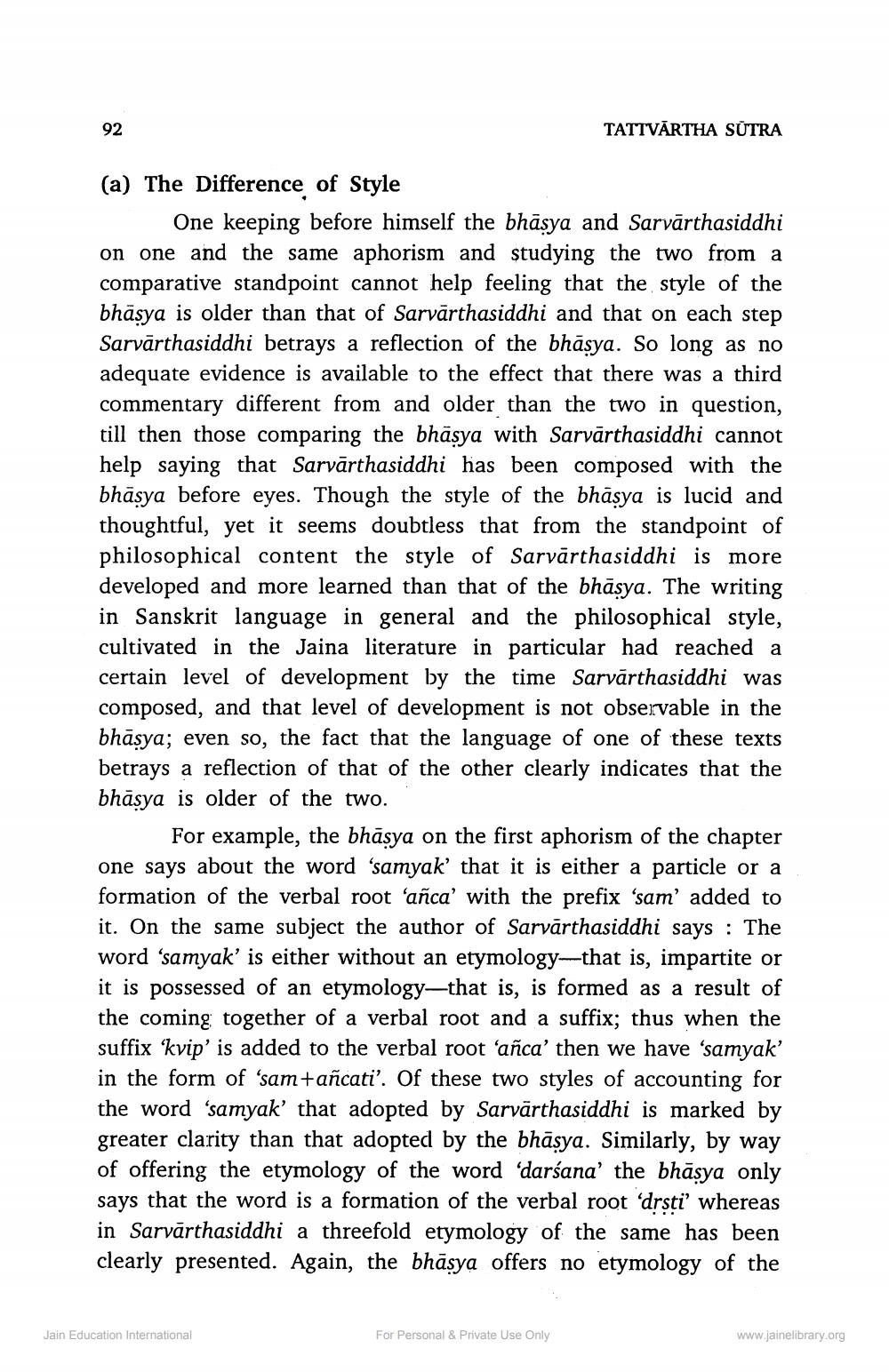________________
92
TATTVĀRTHA SŪTRA
(a) The Difference of Style
One keeping before himself the bhāsya and Sarvārthasiddhi on one and the same aphorism and studying the two from a comparative standpoint cannot help feeling that the style of the bhāsya is older than that of Sarvārthasiddhi and that on each step Sarvārthasiddhi betrays a reflection of the bhāsya. So long as no adequate evidence is available to the effect that there was a third commentary different from and older than the two in question, till then those comparing the bhāsya with Sarvārthasiddhi cannot help saying that Sarvārthasiddhi has been composed with the bhāsya before eyes. Though the style of the bhāsya is lucid and thoughtful, yet it seems doubtless that from the standpoint of philosophical content the style of Sarvārthasiddhi is more developed and more learned than that of the bhāsya. The writing in Sanskrit language in general and the philosophical style, cultivated in the Jaina literature in particular had reached a certain level of development by the time Sarvārthasiddhi was composed, and that level of development is not observable in the bhāsya; even so, the fact that the language of one of these texts betrays a reflection of that of the other clearly indicates that the bhāsya is older of the two.
For example, the bhāsya on the first aphorism of the chapter one says about the word 'samyak' that it is either a particle or a formation of the verbal root 'añca' with the prefix 'sam' added to it. On the same subject the author of Sarvārthasiddhi says : The word 'samyak' is either without an etymology—that is, impartite or it is possessed of an etymology—that is, is formed as a result of the coming together of a verbal root and a suffix; thus when the suffix ‘kvip' is added to the verbal root 'añca' then we have 'samyak' in the form of 'sam+añcati'. Of these two styles of accounting for the word 'samyak’ that adopted by Sarvārthasiddhi is marked by greater clarity than that adopted by the bhāsya. Similarly, by way of offering the etymology of the word 'darśana' the bhāsya only says that the word is a formation of the verbal root 'drsti' whereas in Sarvārthasiddhi a threefold etymology of the same has been clearly presented. Again, the bhāsya offers no etymology of the
Jain Education International
For Personal & Private Use Only
www.jainelibrary.org




